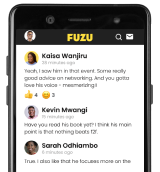If you are a manager working with remote teams, then employee productivity tracking for remote teams should be your highest priority.
The growth of remote working has been significant in recent years primarily due to the advancements in technology and the increasing demand for flexible work. The COVID-19 pandemic accelerated this trend as many organizations were forced to adopt hybrid workplace models. A trend that is expected to increase from 42% in 2021 to 81% in 2024.
However, remote work comes with its own set of challenges, such as difficulties in communication, collaboration, isolation, need for self-discipline and time management. Failure to address these challenges, companies might witness a 37% decline in the productivity of remote workers by 2024.
Overall, a remote worker with a dedicated workspace and a good balance between work and personal life report 29% higher productivity and 53% greater ability to focus on tasks than the one who is constantly distracted by household chores or does not have a proper setup for remote work.
Another factor that affects productivity is the type of work being performed. Some tasks, such as those that require focused attention, are well suited to remote work, while others such as those that require frequent collaboration may be more challenging.
Companies can therefore help promote productivity among remote workers by providing the necessary tools and support, encouraging a healthy work-life balance, and fostering a culture of trust and collaboration. This is achieved through employee productivity tracking.
In this article, we have shared strategies you can use to assess and improve the value generated by your team within a given period.
First, develop clear, measurable goals for each employee
It is important to establish clear and measurable objectives for employee productivity tracking. Set specific goals for staff, such as how many tasks they should complete each day, or allow employees to set objectives for themselves. While at it, you should also ensure that employees have access to the necessary tools and resources to be productive. This can include providing access to the latest technology and offering training to help employees stay up to date on new trends.
Utilize project management tools
Project management tools are a great way to stay on top of your team's progress. If you're using a tool like Asana or Todoist, you can easily set up projects for each team member and see what's coming up next. You can also check out Jira, Trello, and Basecamp to manage projects as they also offer excellent project management features. You can assign tasks to different members of your team, set deadlines and even add reviews and comments so everyone knows what's going on.
These tools can also be used to track the progress of individual projects and the overall team's performance. This can be particularly useful when working in teams with multiple remote employees, as each person's contribution may not be apparent daily.
Read also: How to effectively manage teams working remotely.
Leverage video conferencing tools
Video conferencing tools such as Zoom and GoToMeeting can be helpful in keeping your team connected in a virtual office or when travelling. Use these tools to conduct short meetings and presentations or to host larger group discussions spanning multiple time zones.
With video conference tools, you can schedule regular check-ins and provide feedback on the tasks. Use this time to talk about how things are going for everyone and what areas need improvement — but don't let it devolve into a critique session. Instead, focus on highlighting strengths and sharing ideas for improvement before moving on to other topics like vacation plans or new team members. You can also consider once in a while face to face meetings.
Read also: Preserving your company culture while your team is working remotely
Provide feedback and recognition
Beyond tracking metrics, it is important also to provide feedback and recognition to your remote team members. This can help motivate them. In addition to providing regular feedback on metrics, it can also be helpful to give recognition and celebrate wins more frequently. If possible, it can also be helpful to involve your remote team members in decision-making processes to show you value their input.
Set expectations for communication
In addition to check-ins, it is important to set expectations for communication to ensure that there is open and timely communication between team members. It can also be helpful to establish a process for communicating work-related issues. This can help ensure that any arising issues are addressed and resolved promptly.
Read also: Are teams more productive while working remotely? A data-backed response
Conclusion
Productivity tracking is an important part of any employee performance management strategy. However, remote work can present unique challenges in this area because measuring factors related to virtual collaboration can be difficult. We hope these tips provide some helpful guidelines for effectively monitoring and tracking remote team members’ productivity.

